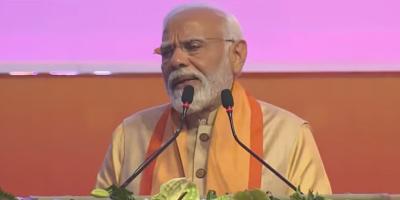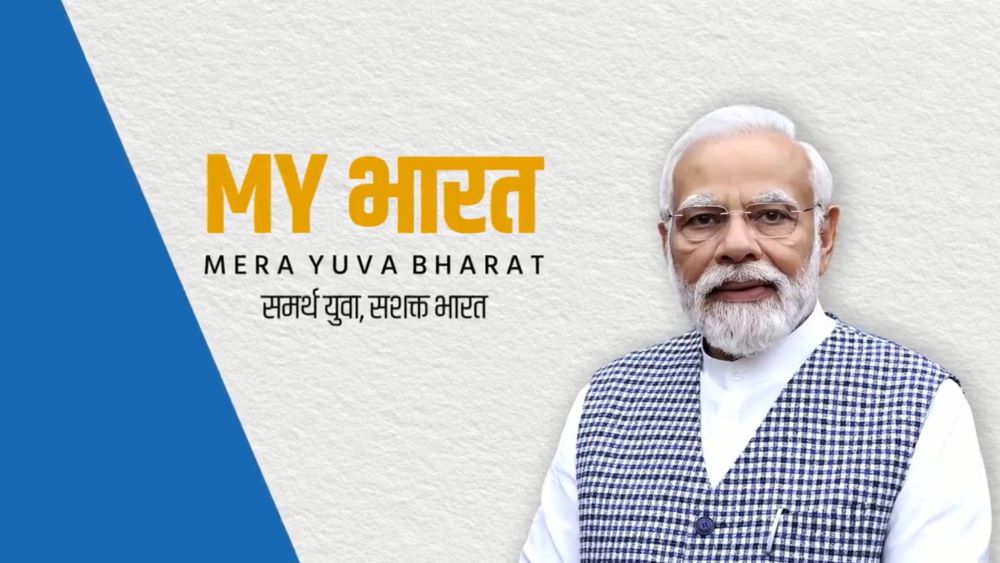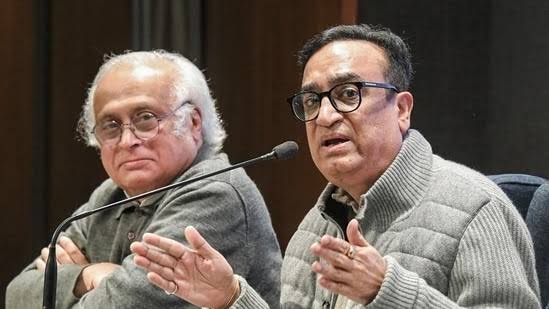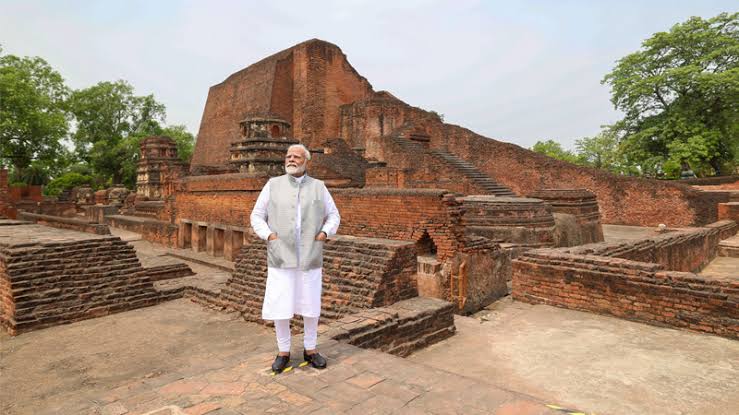Narendra Modi is leaving no stone unturned to secure victory in the upcoming elections, even forming alliances with previously labelled corrupt parties.
 In today’s world, there are three certainties – death, taxes, and the omnipresence of Narendra Modi’s image in your morning newspaper. While the first two have been constants throughout history, the latter has become increasingly prevalent in recent times.
In today’s world, there are three certainties – death, taxes, and the omnipresence of Narendra Modi’s image in your morning newspaper. While the first two have been constants throughout history, the latter has become increasingly prevalent in recent times.
Hardly a day goes by without a strip advertisement above the masthead promising the ‘Modi Government’s Guarantee,’ pledging everything from food security to education and employment opportunities. As if this weren’t enough, full-page advertisements from state governments (and private sector entities) proclaim that every achievement and aspiration is indebted to the benevolence and endorsement of their Supreme Leader – his image prominently displayed to ensure the message is received.
For instance, on March 13, the Bombay edition of the Times of India featured a full-page ad by the Tata Group welcoming Modi for the virtual inauguration of India’s first Semiconductor Fab in Dholera, Gujarat.
Flipping through the pages, one encounters advertisements from the Chhattisgarh government, touting their fulfilment of the ‘Modi Guarantee’ during a ‘Visit to Chhattisgarh,’ with Modi’s portrait dominating the ad, outlining the state government’s developmental vision.
Further, two full-page ads by the Uttar Pradesh government – again featuring Modi alongside (but towering over) Chief Minister Adityanath- extoll the state’s “magnificent” infrastructure development and cultural, spiritual, and religious revival. In case the message isn’t clear, the ads elaborate extensively.
This is followed by another Modi guarantee, this time for the World Class Dedicated Freight Corridors, advertised by Indian Railways.
Multiply this by the hundreds of newspapers across the country and television channels, and one can grasp the immense expenditure involved. These ads are not funded by the BJP but by the respective governments and private sector entities, generating revenue for the publications. It’s understandable why newspapers are hesitant to pose tough questions to the authorities.
The relentless coverage of Modi’s imagery and propaganda is not unprecedented – his photos have adorned billboards, fertilizer bags, and even COVID-19 vaccination certificates since 2014. Books authored by him or about him, such as “Exam Warriors” published in 13 languages, contribute to his cult of personality, portraying him as not only a tea seller turned leader but also as a profound thinker who commands respect on the global stage.
What sets this election apart is the concentrated focus on the Modi government’s performance and promises, without acknowledging the setbacks of the past decade – from demonetization to the encroachment of Indian territory by China. While such tactics are expected during elections, the intensity and utilization of public funds make this campaign unique. Despite the potentially less-than-rosy ground reality, the campaign is filled with lofty claims and assurances.
Modi is leaving nothing to chance – breaking ties with old allies and joining forces with those previously labelled as corrupt, such as Chandrababu Naidu in Andhra Pradesh and Ajit Pawar in Maharashtra. Efforts are underway to dismantle the INDIA alliance in Bihar. Enforcement agencies are being deployed across the country.
However, realizing the need for support beyond its traditional strongholds like UP, Gujarat, and the Hindi-speaking belt, the government is striving to ensure daily prominence in the minds of voters. Modi remains the BJP’s biggest asset, hence the extensive projection through daily ads, even if it means taxpayer money foots the bill.
The term “Modi government” suggests a sense of ownership, implying that it is “his” administration, with little room for collective responsibility. The once-collegial BJP now revolves around Modi, with all successes attributed to him and failures blamed on others.
If the party and its allies fail to secure the 400 seats (370 for the BJP) they aim for – purportedly to amend the constitution, as suggested by an MP from Karnataka – who will shoulder the blame? This isn’t mere pre-election rhetoric; Modi genuinely aims to surpass previous records, although even achieving the 303 seats won last time appears challenging.
While significant promises like the abrogation of Article 370, the construction of a temple in Ayodhya, and the Citizenship (Amendment) Act have been fulfilled, voters are primarily concerned about tangible improvements in their lives. Hence, the advertisements focus less on past achievements and more on promises related to employment, education, and housing. Despite India’s impressive growth figures, voters remain sceptical about how the government will positively impact their lives. Will the daily assurances of the Modi government impress the electorate?




